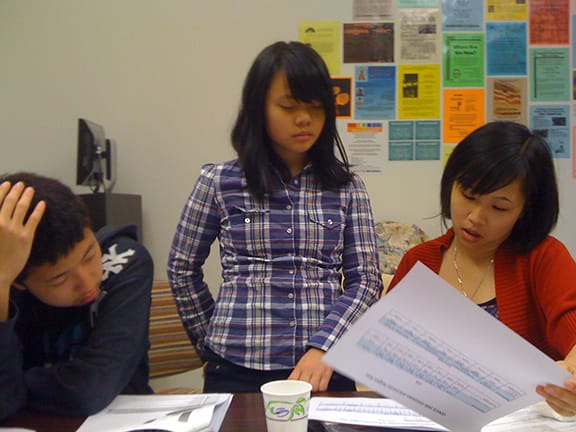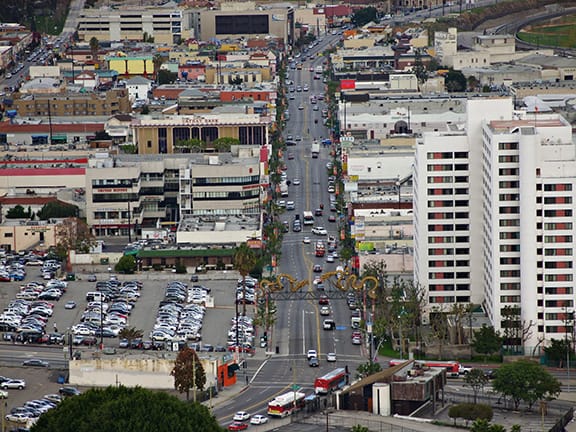Cevadne Lee Assists Chinatown

Last year, the Los Angeles City Council passed zoning regulations intended to spur business development, safeguard open space, and revitalize the neighborhoods of Chinatown and Lincoln Heights. But if local activists hadn’t gotten help from Cevadne Lee, a master’s student in CGU’s School of Community & Global Health (SCGH), the regulations might have failed to take local residents into account.
In addition to pursuing her studies at CGU, Lee volunteers as a mentor for the South East Asian Community Alliance (SEACA), a Chinatown-based nonprofit that works with youth 14 to 17 from the local area. Teaming up with SEACA, she helped local residents have a voice in determining the future of their neighborhoods.
“For me, it’s personal because I grew up there, too.” Lee said. This was her old neighborhood. “Working with the youth is a reflection of myself . . . It’s contributing, finding a way to give back.”

SEACA works to empower youth and change their communities. Local youth receive a full year of SEACA training on how to become community organizers. Newly minted organizers then put their practice into action and launch a political campaign.
The particular youth group Lee worked with needed to gather information about local families and businesses in order to gauge specific community needs. City officials moved forward to adopt new zoning regulations—called the Cornfield Arroyo Seco Specific Plan (CASP)—to promote commercial, retail, and residential development in the area. SEACA wanted to make sure residents had a say in the proposed re-zoning.
This is where Lee came in. Because of her research background, the executive director of SEACA called her in to help. Lee guided youth organizers through creating a questionnaire, surveying locals, and—when the data was collected—interpreting the results.
They discovered several things, chief among them the fact that affordable housing was something the community desperately needed. The survey revealed that several families (up to three) were living cramped together in small apartments because of skyrocketing rent in neighboring areas. At the time, the Cornfield plan did not sufficiently address this affordable housing issue.
Lee and organizers spearheaded a campaign, lobbied during city council meetings, secured legal help, and garnered support through the office of then-City Council Member Ed Reyes, who represented the area. After almost two years, affordable housing was made part of the Cornfield plan, which was approved by the city in January 2013.
“The research in the community is not just the youth being guinea pigs, going to the communities to answer the survey, but actually involving them in the process too,” Lee said.
Developers who might have hoped to build luxury apartments in the area now have powerful incentive, through the plan’s provisions, to also provide affordable housing for local residents.
A Los Angeles Times editorial called the Cornfield plan a “model for LA planning,” a way to “spur economic development without driving out the very people who need new jobs and improved living conditions the most.”
“I thought it would be just a little research project,” Lee said. “But a little survey that was 30 questions blossomed into something bigger.”
For a video about SEACA’s campaign, click on the video below: